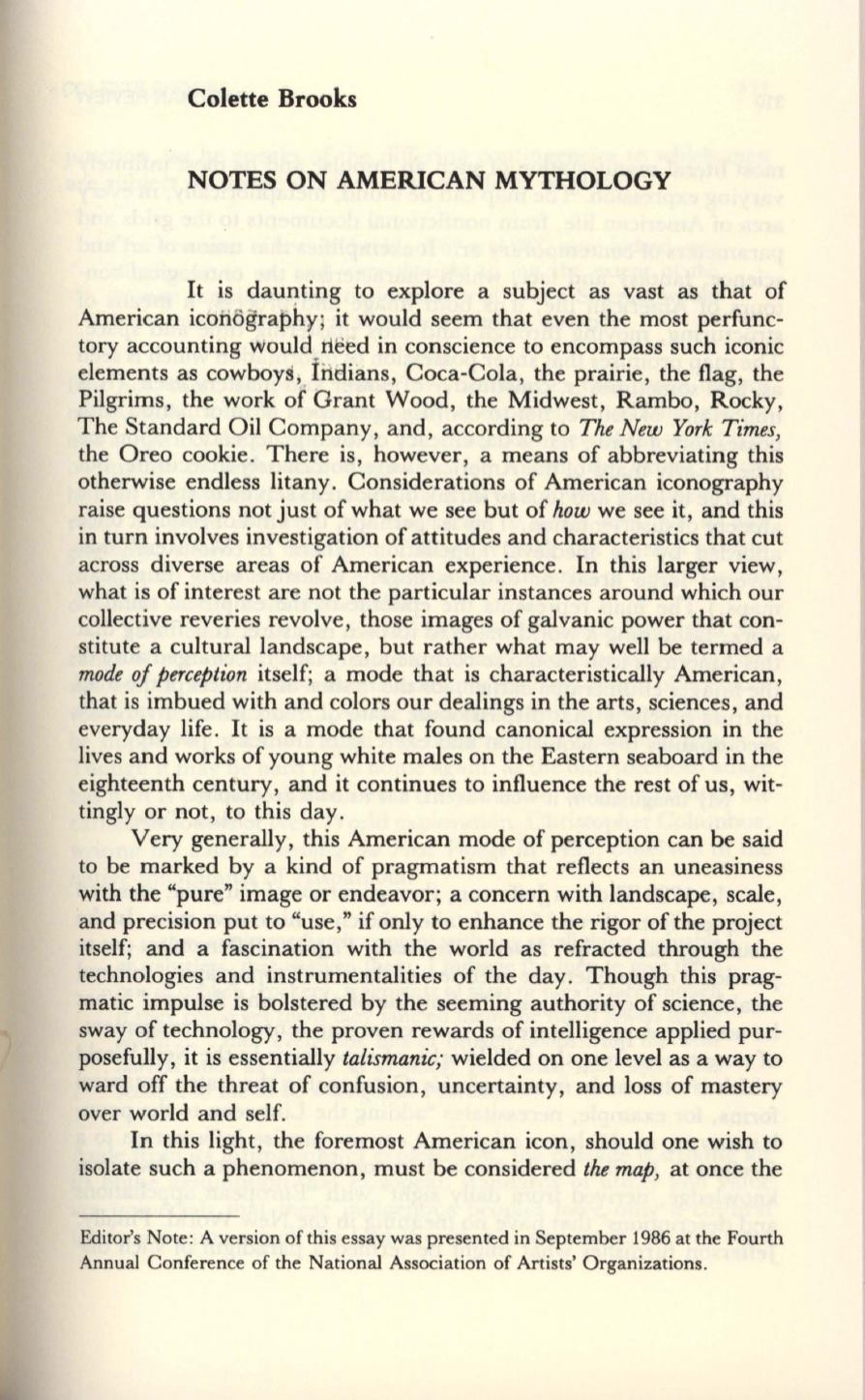
Colette Brooks
NOTES ON AMERICAN MYTHOLOGY
It
is dauJ?-ting to explore a subject as vast as that of
American icoii6graphy; it would seem that even the most perfunc–
tory accounting would.rleed in conscience to encompass such iconic
elements as cowboys, .Indians, Coca-Cola, the prairie, the flag, the
Pilgrims, the work of Grant Wood, the Midwest, Rambo, Rocky,
The Standard Oil Company, and, according to
The New York Times,
the Oreo cookie. There is, however, a means of abbreviating this
otherwise endless litany. Considerations of American iconography
raise questions not just of what we see but of
how
we see it, and this
in turn involves investigation of attitudes and characteristics that cut
across diverse areas of American experience. In this larger view,
what is of interest are not the particular instances around which our
collective reveries revolve, those images of galvanic power that con–
stitute a cultural landscape, but rather what may well be termed a
mode of perception
itself; a mode that is characteristically American,
that is imbued with and colors our dealings in the arts, sciences, and
everyday life. It is a mode that found canonical expression in the
lives and works of young white males on the Eastern seaboard in the
eighteenth century, and it continues to influence the rest of us, wit–
tingly or not, to this day .
Very generally, this American mode of perception can be said
to be marked by a kind of pragmatism that reflects an uneasiness
with the "pure" image or endeavor; a concern with landscape, scale,
and precision put to "use," if only to enhance the rigor of the project
itself; and a fascination with the world as refracted through the
technologies and instrumentalities of the day. Though this prag–
matic impulse is bolstered by the seeming authority of science, the
sway of technology, the proven rewards of intelligence applied pur–
posefully, it is essentially
talismanic;
wielded on one level as a way to
ward off the threat of confusion, uncertainty, and loss of mastery
over world and self.
In this light, the foremost American icon, should one wish to
isolate such a phenomenon, must be considered
the map,
at once the
Editor's Note: A version of this essay was presented in September 1986 at the Fourth
Annual Conference of the National Association of Artists' Organizations.


